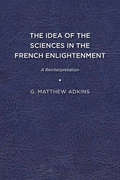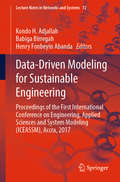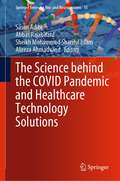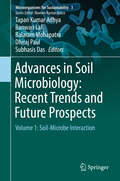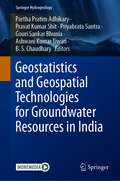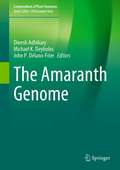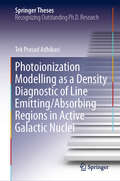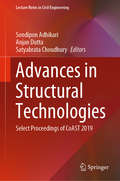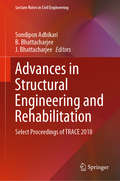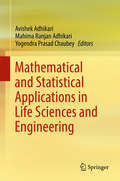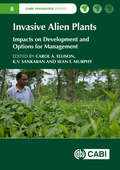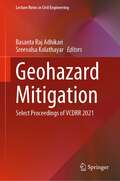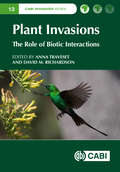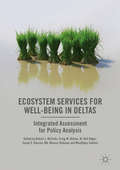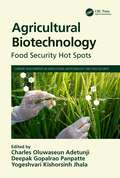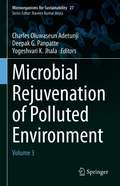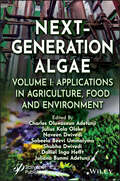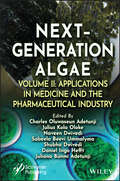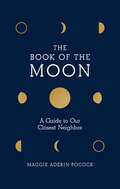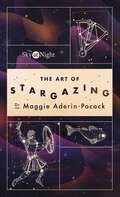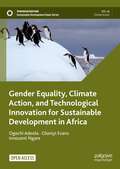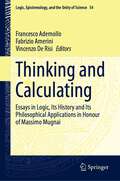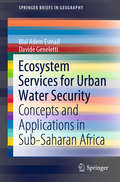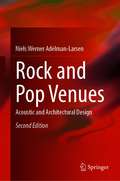- Table View
- List View
The Idea of the Sciences in the French Enlightenment: A Reinterpretation (G - Reference, Information And Interdisciplinary Subjects Ser.)
by G. Matthew AdkinsThis book traces the development of the idea that the sciences were morally enlightening through an intellectual history of the secrétaires perpétuels of the French Royal Academy of Sciences and their associates from the mid-seventeenth century to the end of the eighteenth century. Academy secretaries such as Fontenelle and Condorcet were critical to the emergence of a central feature of the narrative of Enlightenment in that they encouraged the notion that the “philosophical spirit” of the Scientific Revolution, already present among the educated classes, should guide the necessary reformation of society and government according to the ideals of scientific reasoning. The Idea of the Sciences also tells an intellectual history of political radicalization, explaining especially how the marquis de Condorcet came to believe that the sciences could play central a role in guiding the outcome of the Revolution of 1789. Published by University of Delaware Press. Distributed worldwide by Rutgers University Press.
Data-Driven Modeling for Sustainable Engineering: Proceedings of the First International Conference on Engineering, Applied Sciences and System Modeling (ICEASSM), Accra, 2017 (Lecture Notes in Networks and Systems #72)
by Kondo H. Adjallah Babiga Birregah Henry Fonbeyin AbandaThis book gathers the proceedings of the 1st International Conference on Engineering, Applied Sciences and System Modeling (ICEASSM), a four-day event (18th–21st April 2017) held in Accra, Ghana. It focuses on research work promoting a better understanding of engineering problems through applied sciences and modeling, and on solutions generated in an African setting but with relevance to the world as a whole. The book provides a holistic overview of challenges facing Africa, and addresses various areas from research and development perspectives. Presenting contributions by scientists, engineers and experts hailing from a host of international institutions, the book offers original approaches and technological solutions to help solve real-world problems through research and knowledge sharing. Further, it explores promising opportunities for collaborative research on issues of scientific, economic and social development, making it of interest to researchers, scientists and practitioners looking to conduct research in disciplines such as water supply, control, civil engineering, statistical modeling, renewable energy and sustainable urban development.
The Science behind the COVID Pandemic and Healthcare Technology Solutions (Springer Series on Bio- and Neurosystems #15)
by Sasan Adibi Abbas Rajabifard Sheikh Mohammed Shariful Islam Alireza AhmadvandThis book offers a timely review of modern technologies for health, with a special emphasis on wireless and wearable technologies, GIS tools and machine learning methods for managing the impacts of pandemics. It describes new strategies for forecasting evolution of pandemics, optimizing contract tracing, and for detection and diagnosis of diseases, among others. Written by researchers and professionals with different backgrounds, this book offers a extensive information and a source of inspiration for physiologists, engineers, IT scientists and policy makers in the health and technology sector.
Advances in Soil Microbiology: Volume 1: Soil-microbe Interaction (Microorganisms For Sustainability #3)
by Tapan Kumar Adhya Banwari Lal Balaram Mohapatra Dhiraj Paul Subhasis DasThis book presents a comprehensive collection of articles illustrating the importance of microbial community structure and function for ecosystem sustainability and environmental reclamation. It addresses a diverse range of topics, including microbial diversity, physiology, genomics, ecosystem function, interaction, metabolism, and the fruitful use of microbial communities for crop productivity and environmental remediation. <P><P> In addition, the book explores issues ranging from general concepts on the diversity of microorganisms in soil, and ecosystem function to the evolution and taxonomy of soil microbiota, with future prospects. It covers cutting-edge methods in soil microbial ecological studies, rhizosphere microflora, the role of organic matter in plant productivity, biological nitrogen fixation and its genetics, microbial transformation of plant nutrients in soil, plant-growth-promoting rhizobacteria, and organic matter transformation. <P> The book also discusses the application of microbes in biodegradation of xenobiotic contaminants. It covers bio-fertilizers and their role in sustainable agriculture and soil health, biological control of insect pests and plant pathogens, and the latest tools of omics in soil microbiology, i.e. genomics, proteomics, transcriptomics and metabolomics, which offer pioneering approaches to the exploration of microbial structure and function.
Geostatistics and Geospatial Technologies for Groundwater Resources in India (Springer Hydrogeology)
by Partha Pratim Adhikary Pravat Kumar Shit Priyabrata Santra Gouri Sankar Bhunia Ashwani Kumar Tiwari B. S. ChaudharyThis book offers essential information on geospatial technologies for water resource management and highlights the latest GIS and geostatistics techniques as they relate to groundwater.Groundwater is inarguably India's single most important natural resource. It is the foundation of millions of Indian farmers' livelihood security and the primary source of drinking water for a vast majority of Indians in rural and urban areas. The prospects of continued high rates of growth in the Indian economy will, to a great extent, depend on how judiciously we can manage groundwater in the years to come.Over the past three decades, India has emerged as by far the single largest consumer of groundwater in the world. Though groundwater has made the country self-sufficient in terms of food, we face a crisis of dwindling water tables and declining water quality. Deep drilling by tube wells, which was once part of the solution to water shortages, is now in danger of becoming part of the problem. Consequently, we urgently need to focus our efforts on the sustainable and equitable management of groundwater. Addressing that need, this book presents novel advances in and applications of RS–GIS and geostatistical techniques to the research community in a precise and straightforward manner.
The Amaranth Genome (Compendium of Plant Genomes)
by Dinesh Adhikary Michael K. Deyholos John P. Délano-FrierThis book describes the development of genetic resources in amaranths, with a major focus on genomics, reverse, and forward genetics tools and strategies that have been developed for crop improvement. Amaranth is an ancient crop native to the New World. Interest in amaranths is being renewed, due to their adaptability, stress tolerance, and nutritional value. There are about 65 species in the genus, including Amaranthus caudatus L., A. cruentus L., and A. hypochondriacus L., which are primarily grown as protein-rich grains or pseudocereals. The genus also includes major noxious weeds (e.g., A. palmeri). The amaranths are within the Caryophyllales order and thus many species (e.g., A. tricolor) produce red (betacyanin) or yellow (betaxanthin) betalain pigments, which are chemically distinct from the anthocyanins responsible for red pigmentation in other plants. A. hypochondriacus, which shows disomic inheritance (2n = 32; n= 466 Mb), has been sequenced and annotated with 23,059 protein-coding genes. Additional members of the genus are now also been sequenced including weedy amaranths, other grain amaranths, and their putative progenitors.
Photoionization Modelling as a Density Diagnostic of Line Emitting/Absorbing Regions in Active Galactic Nuclei (Springer Theses)
by Tek Prasad AdhikariThis book presents timely work on the nature of the physical processes underpinning two of the basic characteristics of the gas structure in the innermost region of Active Galactic Nuclei (AGN): ionized outflows and emission line regions. In addition, it describes physics-based methods for estimating the density of the astrophysical plasma surrounding AGN. All numerical computations of the photoionized gas employ the most advanced codes available (CLOUDY and TITAN). Calculations of the radiative transfer are based on the assumption of thermal and ionization equilibrium. Promising preliminary examples of comparison with current observations are included for several individual AGN. All of them suggest that the absorbing/emitting gas should have a density on the order of 1012 cm-3. Future observations will provide more objects to verify these results, and will allow us to put constraints on the launch radius of ionized outflows and therefore on the mass loading and kinetic energy outflow rates. These rates, in turn, are crucial to estimating whether the outflows have a significant feedback impact on star formation and metal enrichment in the interstellar medium of the host galaxy. In closing, the book discusses a representative example of applying powerful photoionization techniques to explain the complex physics of the AGN environment.
Advances in Structural Technologies: Select Proceedings of CoAST 2019 (Lecture Notes in Civil Engineering #81)
by Sondipon Adhikari Anjan Dutta Satyabrata ChoudhuryThis book comprises select proceedings of the National Conference on Advances in Structural Technology (CoAST 2019). It brings together different applied and technological aspects of structural engineering. The main topics covered in this book include solid mechanics, composite structures, fluid-structure interaction, soil-structure interaction, structural safety, and structural health monitoring. The book also focuses on emerging structural materials and the different behavior of civil, mechanical, and aerospace structural systems. Given its contents, this book will be a useful reference for researchers and practitioners working in structural safety and engineering.
Advances in Structural Engineering and Rehabilitation: Select Proceedings of TRACE 2018 (Lecture Notes in Civil Engineering #38)
by Sondipon Adhikari B. Bhattacharjee J. BhattacharjeeThis book comprises select papers presented at the International Conference on Trends and Recent Advances in Civil Engineering (TRACE 2018). The book covers a wide range of topics related to recent advancements in structural engineering, structural health monitoring, rehabilitation and retrofitting of structures, and earthquake-resistant structures. Based on case studies and laboratory investigations, the book highlights latest techniques and innovative methods for building repair and maintenance. Recent development in materials being used in structural rehabilitation and retrofitting is also discussed. The contents of this book can be useful for researchers and professionals working in structural engineering and allied areas.
Legal Regulation of Private Actors in Outer Space: India’s Role
by Malay AdhikariThe book addresses legal issues and challenges in using Space Technology. Especially covered are the provisions of International Space Law and few national space legislations to regulate private actors in outer space. The key chapters covered are history of space regulations, private actors in space, legal issues for such actors, regulating these issues outside India, and the same in India. In concluding chapter, the author has worked out some recommendations.The book would be of immense use to people especially startups in private space industry; students, faculties and scholars of Space Law and Policy, Space Security, Defence and Security Studies.Please note: Taylor & Francis does not sell or distribute the Hardback in India, Pakistan, Nepal, Bhutan, Bangladesh and Sri Lanka
Mathematical and Statistical Applications in Life Sciences and Engineering
by Mahima Ranjan Adhikari Avishek Adhikari Yogendra Prasad ChaubeyThe book includes articles from eminent international scientists discussing a wide spectrum of topics of current importance in mathematics and statistics and their applications. It presents state-of-the-art material along with a clear and detailed review of the relevant topics and issues concerned. The topics discussed include message transmission, colouring problem, control of stochastic structures and information dynamics, image denoising, life testing and reliability, survival and frailty models, analysis of drought periods, prediction of genomic profiles, competing risks, environmental applications and chronic disease control. It is a valuable resource for researchers and practitioners in the relevant areas of mathematics and statistics.
Invasive Alien Plants: Impacts on Development and Options for Management
by Bhaskar Adhikari Dr V. Anitha Hem Sagar Baral Dr Matthew Cock Kavya Dasora Usha Dev Ding Jianqing Dr Carol A Ellison Kavita Gupta Ravi Khetarpal Jyotsna Krishnakumar Dr Sean T Murphy Warea Orapa R. J. Rabindra P. S. Ramakrishnan K Sankaran K. V. Santheep Soekisman Tjitrosemito Soetikno S. Sastroutomo P. Sreerama Kumar Abraham VergheseInvasive alien plants pose a major threat to agriculture, the natural environment and livelihoods worldwide and create challenges for development. This is especially the case for those who live and work in rural areas. This book, for the first time, brings together a wide range of invasive plant specialists from the Asia-Pacific region who shares their experience in addressing the problem and delivering solutions. Mikania micrantha is used as case study in the book as it exemplifies many of the issues that need to be addressed. This neotropical vine is a major weed across the tropical humid zones of the region, where it smothers agroforestry, home gardens, natural forests and plantation production systems. The book emphasises the social and economic implications of plant invasion, and discusses direct impacts on livelihoods and biodiversity. It explains how various approaches to management including traditional ecological knowledge and classical biological control can be keys to the delivery of sustainable solutions, focusing on experiences in India, Nepal, Papua New Guinea and China. The use of policy frameworks in biological control and other management measures are also described. Key features: · Empircal work from a wide range of geographical areas · Examines the wide scale multi-sector impacts of individual invasive species · Considers the practicalities of policy development and implementation · Shows how management solutions to invasive species are achievable This book will be of value to management practitioners, researchers, studentsand officials in policy, quarantine, and agriculture departments who wish to understand the importance of alien plant invasions in their countries.
Geohazard Mitigation: Select Proceedings of VCDRR 2021 (Lecture Notes in Civil Engineering #192)
by Basanta Raj Adhikari Sreevalsa KolathayarThis book presents the select proceedings of the Virtual Conference on Disaster Risk Reduction (VCDRR 2021). It emphasizes on the role of civil engineering for a disaster resilient society. It presents latest research in geohazards and their mitigation. Various topics covered in this book are land use, ground response, liquefaction, and disaster mitigation techniques. This book is a comprehensive volume on disaster risk reduction (DRR) and its management for a sustainable built environment. This book will be useful for the students, researchers, policy makers and professionals working in the area of civil engineering, especially disaster management.
Plant Invasions: The Role of Biotic Interactions (CABI Invasives Series)
by Ashish Adhikari Marcelo A. Aizen Warwick J. Allen Christophe Baltzinger Iain R. Caldwell Regan M. Callaway Jane A. Catford Lohengrin A Cavieres Keith Clay Julie A Coetzee Robert I Colautti Carla M. D’Antonio John L. Devaney M. Celeste Díaz Vélez Professor Colleen T Downs Carine Emer Fernando Fernanda Ribeiro da Silva Ana E. Ferreras S. Luke Flory Erica M. Goss Philip F. Harmon Ruben H Heleno Martin P. Hill Robert D. Holt Richard Honor Cang Hui Christopher N. Kaiser-Bunbury Amy E Kendig Peter M Kotanen Sara E. Kuebbing Pietro Landi Guillaume Latombe Brett R. Lane Johannes J. Roux Nathan P Lemoine Jacob. E. Lucero Ana Montero-Castaño Lindelwa S. Msweli Valeria Paiaro John D. Parker Marco Aurélio Pizo Evan M Rehm David M Richardson Ushma Shukla Benno I Simmons Lauren M. Smith-Ramesh Sérgio Timóteo Elizabeth M Wandrag Christopher M Wojan Stephanie G. YelenikThere are many books on aspects of plant invasions, but none that focus on the key role of species interactions in mediating invasions. This book reviews exciting new findings and explores how new methods and tools are shedding new light on crucial processes in plant invasions. In 23 chapters, with contributions from 51 authors, the book addresses: · the main theories and hypotheses in plant invasion ecology that invoke species interactions; · plant invasions that are facilitated by, or benefit from, by mutualistic interactions and release from enemies; · antagonistic interactions that prevent or hinder plant invasions; · impacts of plant invasions on native species interactions and ecosystem functioning; · the interaction-network approach to understanding plant invasions; · the importance of considering species interactions in managing plant invasions
Ecosystem Services for Well-Being in Deltas: Integrated Assessment For Policy Analysis
by W. Neil Adger Robert J. Nicholls Craig W. Hutton Susan E. Hanson Md. Munsur Rahman Mashfiqus SalehinThis book answers key questions about environment, people and their shared future in deltas. It develops a systematic and holistic approach for policy-orientated analysis for the future of these regions. It does so by focusing on ecosystem services in the world’s largest, most populous and most iconic delta region, that of the Ganges-Brahmaputra delta in Bangladesh. The book covers the conceptual basis, research approaches and challenges, while also providing a methodology for integration across multiple disciplines, offering a potential prototype for assessments of deltas worldwide. Ecosystem Services for Well-Being in Deltas analyses changing ecosystem services in deltas; the health and well-being of people reliant on them; the continued central role of agriculture and fishing; and the implications of aquaculture in such environments.The analysis is brought together in an integrated and accessible way to examine the future of the Ganges Brahmaputra delta based on a near decade of research by a team of the world’s leading scientists on deltas and their human and environmental dimensions. This book is essential reading for students and academics within the fields of Environmental Geography, Sustainable Development and Environmental Policy focused on solving the world’s most critical challenges of balancing humans with their environments.This book is licensed under a Creative Commons Attribution 4.0 International License.
Agricultural Biotechnology: Food Security Hot Spots (Current Developments in Agricultural Biotechnology and Food Security)
by Charles Oluwaseun Adetunji Deepak Gopalrao Panpatte Yogeshvari Kishorsinh JhalaThis book presents strategies and techniques highlighting the sustainability and application of microbial and agricultural biotechnologies to ensure food production and security. This book includes different aspects of applications of Artificial Intelligence in agricultural systems, genetic engineering, human health and climate change, recombinant DNA technology, metabolic engineering and so forth. Post-harvest extension of food commodities, environmental detoxification, proteomics, metabolomics, genomics, bioinformatics and metagenomic analysis are discussed as well. Features: Reviews technological advances in microbial biotechnology for sustainable agriculture using Artificial Intelligence and molecular biology approach. Provides information on the fusion between microbial biotechnology and agriculture. Specifies the influence of climate changes on livestock, agriculture and environment. Discusses sustainable agriculture for food security and poverty alleviation. Explores current biotechnology advances in food and agriculture sectors for sustainable crop production. This book is aimed at researchers and graduate students in agriculture, food engineering, metabolic engineering and bioengineering.
Microbial Rejuvenation of Polluted Environment: Volume 3 (Microorganisms for Sustainability #27)
by Charles Oluwaseun Adetunji Deepak G. Panpatte Yogeshvari K. JhalaPollution is one of the most serious issues facing mankind and other life forms on earth. Environmental pollution leads to the degradation of ecosystems, loss of services, economic losses, and various other problems. The eco-friendliest approach to rejuvenating polluted ecosystems is with the help of microorganism-based bioremediation. Microorganisms are characterized by great biodiversity, genetic and metabolic machinery, and by their ability to survive, even in extremely polluted environments. As such, they are and will remain the most important tools for restoring polluted ecosystems / habitats. This three-volume book sheds light on the utilization of microorganisms and the latest technologies for cleaning up polluted sites. It also discusses the remediation or degradation of various important pollutants such as pesticides, wastewater, plastics, PAHs, oil spills etc. The book also explains the latest technologies used for the degradation of pollutants in several niche ecosystems. Given its scope, the book will be of interest to teachers, researchers, bioremediation scientists, capacity builders and policymakers. It also offers valuable additional reading material for undergraduate and graduate students of microbiology, ecology, soil science, and the environmental sciences.
Next-Generation Algae, Volume 1: Applications in Agriculture, Food and Environment
by Charles Oluwaseun Adetunji Julius Kola Oloke Naveen Dwivedi Sabeela Beevi Ummalyma Shubha Dwivedi Daniel Ingo Hefft Juliana Bunmi AdetunjiNEXT-GENERATION ALGAE This book brings together experts in relevant fields to describe the successful application of algae and their derivatives in agriculture, improving agricultural sustainability, harvesting and processing, food security, fishery, aquafarming, agriculture pollution, and state-of-the-art developments of algae in commercial and agriculture utilization. This book provides up-to-date and cutting-edge information on the application of algae in producing sustainable solutions to various challenges that arise from an increase in agricultural production, as well as its utilization in the bioremediation of industrial wastewater. Moreover, the book provides detailed information about the recent advancements in smart microalgae wastewater treatment using Internet of Things (IoT) and edge computing applications. Other topics covered include the use of microalgae in various applications; the use of algae to remove arsenic; algae’s role in plastic biodegradation, heavy metal bioremediation, and toxicity removal from industrial wastewater; the application of DNA transfer techniques in algae; the use of algae as food and in the production of food, ascorbic acid, health food, supplements, and food surrogates; relevant biostimulants and biofertilizers that could be derived from cyanobacterials and their role in sustainable agriculture; and algae’s application in the effective production of biofuels and bioenergy. Audience This book is aimed at a diverse audience including professionals, scientists, environmentalists, industrialists, researchers, innovators, and policymakers who have an interest in bioremediation technologies for extremely polluted environments, especially in water, air, and soil.
Next-Generation Algae, Volume 2: Applications in Medicine and the Pharmaceutical Industry
by Charles Oluwaseun Adetunji Julius Kola Oloke Naveen Dwivedi Sabeela Beevi Ummalyma Shubha Dwivedi Daniel Ingo Hefft Juliana Bunmi AdetunjiNEXT-GENERATION ALGAE The book comprehensively details the novel and biologically active compounds derived from algae for sustainable healthcare delivery that could be used for the treatment of an ever-increasing population, prevention of high rate of morbidity rates, as well as in the treatment of numerous diseases, and serve as an alternative drug for the prevention of high level of resistance to synthetic drugs. This second volume places a special emphasis on the discovery of novel and biologically active compounds from algae. It covers a wide range of applications, including the use of astaxanthin and carotenoids derived from algae for the production of nutraceuticals, pharmaceuticals, additives, food supplements, and feed. The book also discusses the production of polyunsaturated fatty acids (PUFAs) and their biomedical applications, recent advancements in the research of sulfated polysaccharides from algal origin, and their antiulcer bioactivities. Other topics include the application of algae in wound healing, the use of nanotechnology for the bioengineering of useful metabolites derived from algae and their multifaceted applications, and the production of single-cell proteins and pigments with high relevance in the industry. Audience Researchers in industry and academia as well as clinicians in the fields of microbiology, biotechnology, and food science will find this book very pertinent.
The Book of the Moon: A Guide to Our Closest Neighbor
by Maggie Aderin-PocockThe BBC’s “face of space” explores all things lunar in this comprehensive guide to the folklore, facts, and possible futures of our only natural satellite.Have you ever wondered if there are seasons on the moon or if space tourism will ever become widely accessible? So has Dr. Maggie Aderin-Pocock, astronomer and host of the BBC’s docuseries, The Sky at Night. In this lucidly written guide, Aderin-Pocock takes readers on a fascinating lunar journey.Aderin-Pocock begins with a basic overview—unpacking everything from the moon’s topography and composition to its formation and orbit around the Earth. She examines beliefs held by ancient civilizations, the technology that allowed for the first moon landing, a brief history of moongazing, and how the moon has influenced culture throughout the years. Looking to the future, she delves into the pros and cons of continued space travel and exploration. Throughout the book are sidebars, graphs, and charts to enhance the facts as well as black-and-white illustrations of the moon and stars.
The Sky at Night: My Essential Guide to Navigating the Night Sky
by Dr Maggie Aderin-PocockLook up...The Art of Stargazing is the ultimate insider's guide to the night sky in which award-winning space scientist and The Sky at Night presenter Dr Maggie Aderin-Pocock shares her expertise and unique insights into the marvellous world of stars. Take a tour of the 88 constellations and explore the science, history, culture and romanticism behind these celestial bodies.In this must-have handbook for budding stargazers - and anyone looking for a little more wonder in their lives - Maggie will help you to identify stars and teach you the basics of naked-eye observation, offering fascinating facts plus advice on kit, 'dark sky' locations and much more. Also included are beautiful illustrations to accompany each constellation and an easy-to-read sky map. With Maggie by your side, the night sky will truly come alive.
Gender Equality, Climate Action, and Technological Innovation for Sustainable Development in Africa (Sustainable Development Goals Series)
by Ogechi Adeola Olaniyi Evans Innocent NgareThis open access book explores the intersection of gender and climate change, suggests ways in which innovative technologies can accelerate climate relief actions, and offers strategies for integrating climate change initiatives into national policies and planning. By examining the devastating consequences of climate change on women and girls throughout the continent, the authors pose a crucial question: Does gender matter in climate change discussions in Africa? Political and social traditions have burdened women with greater vulnerability to the impacts of climate-related natural disasters, including violence, displacement, poverty, famine and lack of access to clean water. However, women are also key to effective and inclusive climate mitigation, adaptation, and decision-making. The authors provide a compelling discourse that identifi es the social and economic benefi ts for all citizens when genderinclusive policies shape equitable and targeted action plans, from mitigationto adaptation and funding.The UN’s SDG 13 calls for urgent action and commitment to combat climate change. The implementable and action-oriented propositions presented in this book will be of interest to students, educators, practitioners, third-sector actors, and policymakers committed to gender equality, sustainable development and climate action in Africa.
Thinking and Calculating: Essays in Logic, Its History and Its Philosophical Applications in Honour of Massimo Mugnai (Logic, Epistemology, and the Unity of Science #54)
by Francesco Ademollo Fabrizio Amerini Vincenzo De RisiThis volume collects 22 essays on the history of logic written by outstanding specialists in the field. The book was originally prompted by the 2018-2019 celebrations in honor of Massimo Mugnai, a world-renowned historian of logic, whose contributions on Medieval and Modern logic, and to the understanding of the logical writings of Leibniz in particular, have shaped the field in the last four decades. Given the large number of recent contributions in the history of logic that have some connections or debts with Mugnai’s work, the editors have attempted to produce a volume showing the vastness of the development of logic throughout the centuries. We hope that such a volume may help both the specialist and the student to realize the complexity of the history of logic, the large array of problems that were touched by the discipline, and the manifold relations that logic entertained with other subjects in the course of the centuries. The contributions of the volume, in fact, span from Antiquity to the Modern Age, from semantics to linguistics and proof theory, from the discussion of technical problems to deep metaphysical questions, and in it the history of logic is kept in dialogue with the history of mathematics, economics, and the moral sciences at large.
Ecosystem Services for Urban Water Security: Concepts and Applications in Sub-Saharan Africa (SpringerBriefs in Geography)
by Blal Adem Esmail Davide GenelettiThe book addresses the challenges of urban water security and adaptive management in Sub-Saharan Africa, exploring and interlinking novel concepts of ecosystems services, watershed investments, and boundary work. Specifically, the book’s goals are to (i) present a conceptual framework for the urban water sector from an ecosystem services perspective, highlighting the specificities of the Sub-Saharan context; (ii) develop an operational approach to designing and assessing the impacts of watershed investments, based on ecosystem services and boundary work; and (iii) test the approach through a case study in Asmara, Eritrea, and discuss the findings and lessons learned that can be applied in other contexts. Through a fully worked out case study, from identification of water challenges and opportunities to spatially explicit modelling, the book offers a sound and accessible, coverage of issues and proposed solutions to better operationalize ecosystem services, watershed investments and boundary work, to promote adaptive management, and achieve water security in the context of rapidly developing cities in Sub-Saharan Africa. The book is an effective tool for capacity building of diverse stakeholders on the urban water sector, including water managers, local and national policy-makers as well as a suitable resource for both undergraduate and post-graduate courses in planning and geography.
Rock and Pop Venues: Acoustic and Architectural Design
by Niels Werner Adelman-LarsenThis new edition of this standard work adds several new information the book, so that sound engineering and architects can better assess the acoustic value of a Rock and Pop Venue. In particular, new insights to the influence of sound absorbers in reflected and important ISO standards are included into the new edition. Based on the first ever scientific investigations on recommendable acoustics for amplified music conducted by the author, this book sets forward precise guidelines for acoustical engineers to optimize the acoustics in existing or future halls for amplified music. It Gives precise guidelines on how to design the acoustics in venues that present amplified music Debates essential construction details, including placement of sound system and use of possible building materials, in the architectural design of new venues or the renovation of old ones Portrays 75 well-known European Rock & Pop venues, their architecture and acoustic properties. 20 venues were rated for their acoustics by music professionals leading to an easy-to-use assessment methodology
